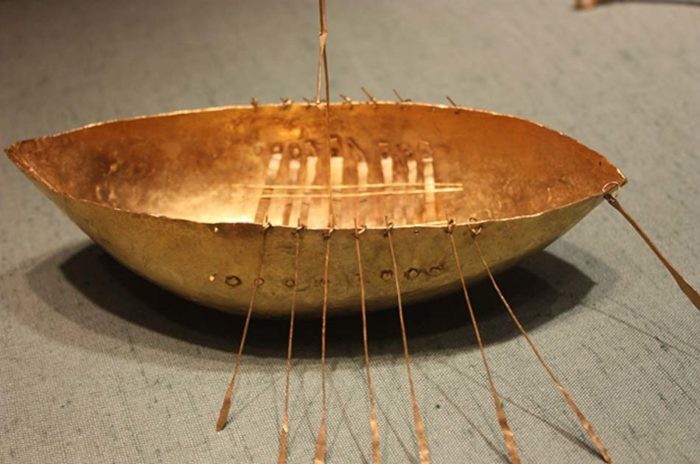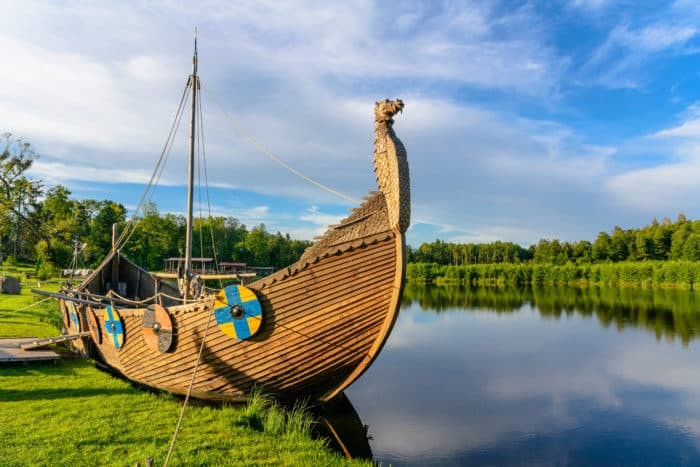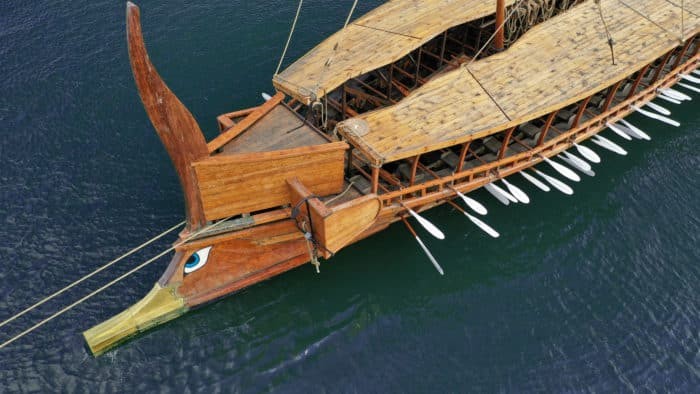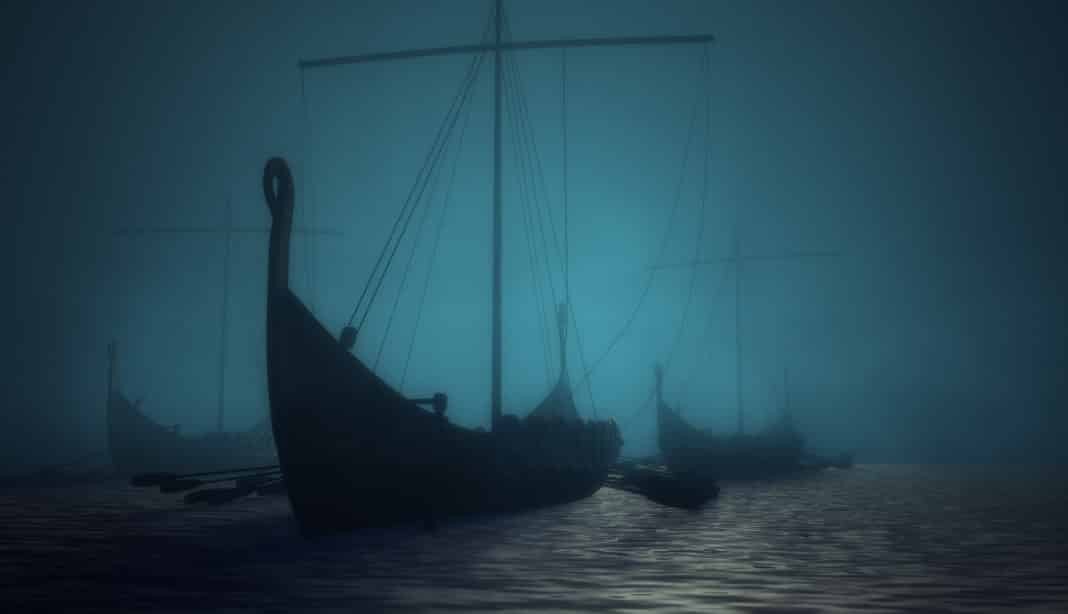For centuries humans have looked across the water at the horizon and wondered what lay beyond. Fabulous monsters? New worlds to conquer and immense wealth to gain? Immortality in the fabled Land of Youth? Stories of fearless mariners have been found across many cultures. The Greeks have Odysseus and the Voyage of the Argonauts, for example. An ancient Danish author, Saxo, recounted the adventures of Thorkill and his voyage to the ‘World Beyond the Ocean’. Irish myths tell of the journey of Mael Duin to the ‘Land of the Living’ and the Voyage of Bran across a flower-strewn sea. St Brendan the Navigator was supposed to have sailed all the way to America from Ireland in the sixth century AD. In a leather boat! All fantasy of course. But is it?

In the National Museum of Ireland is a stunningly beautiful miniature (18 cm, 7 inch) model of a first century BC boat – in gold! The so-called ‘Broighter Boat’ was found in a seaside hoard with other gold objects and is thought to be an offering to the Irish sea god, Manannan. It may represent a type of hide-covered boat called a currach. This was the type of boat supposedly used by the Irish missionary, St. Brendan, and his crew of monks to sail to America in the sixth century AD. Tim Severin had such a boat built in order to test whether this journey could have been undertaken. The 11 meters (36 foot) Brendan was constructed of forty-nine oxhides over a wooden frame. From May 1976 to June 1977 Severin and his crew sailed the Brendan 7,200 km (4,500 miles). Severin’s successful six-month voyage from Ireland to landfall in Newfoundland proved that hide boats were capable of long voyages even if St. Brendan’s adventures were perhaps more fable than fact. Tim Severin has undertaken other expeditions based on famous exploits including sailing from northern Greece through the Dardanelles, across the Sea of Marmara and into the Black Sea in a replica of a Bronze Age galley following the supposed route of Jason and the Argonauts.
In the same way, Norwegian explorer and writer Thor Heyerdahl had attempted to prove that the Polynesian islands could have been colonized by people from South America in pre-Colombian times using only the materials and technologies known then. In Peru, he commissioned a raft made out of balsa logs and other native materials. The raft, the Kon Tiki, was based on illustrations recorded by Spanish conquistadors. In 1947 Heyerdahl and five companions sailed for 101 days over 6,900 km (4,300 mi) from Peru to landfall in the Tuamotu Archipelago in the southern Pacific Ocean. Just as Tim Severin’s Brendan voyage did not prove that Irish monks sailed to America, the Kon Tiki did not prove that Polynesia was colonized by people from South America. In fact, recent DNA studies indicate that the Rapa Nui people have only a small South American component. But it does indicate that such a seemingly fantastic voyage was tantalizingly possible.

The ancient Vikings have long been admired both for their daring and their expertise in boatbuilding. There have been several modern reconstructions of Viking boats including the 30 meter (98 ft) long Sea Stallion which sailed in 2007 successfully from the Danish port of Roskilde 900 miles to Dublin, Ireland. It landed to a much warmer welcome than its predecessors had evoked more than 1000 years before! The Skjoldungen, a replica of the Skudelev 6 discovered sunk in Roskilde fjord, Denmark in 1962 sailed up the southwest coast of Greenland as part of an experimental archaeology trip.
Perhaps the most ambitious expedition of these Viking reconstructions was undertaken by the Draken Harald Harfagre (Dragon Harald Fairhair, after a Norwegian king) in 2016. This ship set sail from Norway across the North Atlantic bound for Iceland, Greenland, Canada and the USA. A reconstruction of a Viking ‘great ship’ it carried a crew of 32 men and women of varying nationalities. The Draken Harald Harfagre is an open, clinker-built ship 35 meters (115 ft) from stem to stern, the largest reconstruction of a Viking-era ship to date. One of the aims of its builders was to explore the world as the Vikings did in the past, following the journey of the famous Leif Erikson who is believed by some to be the first European to land in America. The Draken’s landfall in Newfoundland was at St Anthony’s Harbour near the site of the Viking-era settlement at L’anse aux Meadows.

Amazingly, one reconstruction of an ancient vessel is actually a commissioned ship in the Hellenic Navy of Greece. This is the Olympias, a replica of an Athenian trireme. The trireme was the dominant warship in the Mediterranean during the 7th-4th centuries BC. They had three rows of oars to give them speed and maneuverability with a bronze bow ram to attack enemy ships. The Olympias’ bow ram weighs 200 kg (441 lbs) and is a copy of an original ram now in the Archaeological Museum of Piraeus, Greece. Built of Douglas fir and Virginia oak the Olympias underwent several successful sea trials with a volunteer crew of 170 oarsmen and women.
Archaeologists, scientists and adventurers have recreated ancient ships from a Greek trireme (warship) to St Brendan’s leather boat in order to test if, and how, these vessels might have sailed. Learning about the past and these fantastic sea voyages has never been more exciting!

